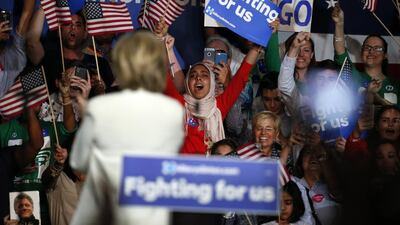When the words “Islam” and the “West” are strung together in a sentence, it is invariably about terrorism or extremism in some shape or form. It was not always like this. Not so long ago the mention of “Islam” in a western context evoked a great many imaginings and led to many intriguing engagements. While we might not speak about the religion in that way any longer, the fact remains that there are a number of interesting stories about Islam and the West.
As any Google search will show, the confluence of Islam and the West consistently brings up a relationship of extremism. Are these Muslims guilty of supporting terrorism? Or are they “good” Muslims who oppose terrorism, and so forth? Be it positive or negative, the discussion all too often revolves around the destructive phenomenon of terrorism. If, for example, an interview is done with a Muslim philosopher, we can expect to see a question about his or her attitude towards terrorism – even while his field of expertise is in metaphysics.
But it did not always look like this.
Of course, there were members of the upper elite in western European societies in the early to mid-20th century, who said appalling things about Islam. But that wasn’t an age of social media. Indeed, the reach of the media itself was quite limited. Stories were far more localised, as opposed to imagined narratives without any familiarity. In that context, the engagement between Islam and the West was often very fruitful.
Many members of western cultural elites found themselves drawn to the spirituality of Islam and became Muslim. They often kept their conversions to themselves, but sometimes became prolific. People such as Abdullah Quilliam were examples of the latter. There were others who began communities all around Europe. They were viewed as exotic – perhaps somewhat like how converts to Buddhism in the West are perceived these days. These converts to Islam found a transcendental and mystical relationship with God.
There were some intriguing repercussions of that. One notable convert was a Swede called Ivan Agueli, who was a painter and an author. He was one of the first westerners to be authorised to initiate people into a Sufi brotherhood. He died in 1917 as Abdal Hadi. Another was Shaykh Muhammad Salih Hendricks – a South African, who spent more than a decade studying in Mecca. He was of a mixed Dutch descent. He passed away in 1945, but not before serving as a judge in Zanzibar and revitalising a community in Cape Town, which continues even today. Some stories are more philosophical in nature. One of the most famous among western converts to Islam in the early 20th century was the Frenchman Rene Guenon, who is credited with the Traditionalist Movement, which critiqued modernity. It led to, for example, a fascinating Italian movement for interfaith dialogue, which exists to this day. It impacted upon the thoughts of many Muslim and non-Muslim about contemporary life and engagement with the sacred.
There were also erratic and unexpected turns. Julius Evola, an Italian influenced by Guenon, took his thought and radically re-interpreted it to justify his own ideas about fascism, though rejected by Guenon.
Alexander Dugin, an infamous ideologue in Russia, is particularly intrigued by Guenon, though with an interpretation perhaps many students of Guenon would reject.
Ironically, the arch anti-Muslim bigot, Stephen Bannon, now at the heart of the Trump administration, speaks favourably about Dugin and the Traditionalists, although it is doubtful that he actually knows that the movement was by and large Islamic.
It wasn’t always simply about intellectual thought or religious ideas, although there are many who fall into that category, such as the famed Cambridge professor, Timothy Winter. Muslim Europeans and westerners in the 20th century were famous for all sorts of other things as well. They were explorers, writers, painters and photographers. The pre-eminent photographer of the Muslim world, for example, Peter Sanders. There are other examples, such as the British judge, Marilyn Mornington; the Olympian, Mo Farah; the media personality, Zainab Badawi; London’s mayor, Sadiq Khan and Richard Thompson, OBE, one of Britain’s most accomplished singers and songwriters.
Those stories and histories are not rare. They are sewn into the tapestry of the western chronicle. Certainly in 2017, it is difficult for us to consider it as organically as we ought to.
There are some who tried to do as such, hence projects such as Our Shared Europe from the British Council. Sadly, that project no longer exists. But as new generations of Muslim westerners come of age, engage with creating their own narratives and redefining what the overall mainstream recognises as “normal”, perhaps we might again see a time again when Islam and Muslim are familiar in the press without being linked to extremism. Rather, they might just be linked to, and be an integral part of, the broader, general, western story.
Dr HA Hellyer is a senior non-resident fellow at the Atlantic Council in Washington and the Royal United Services Institute in London
On Twitter: @hahellyer


